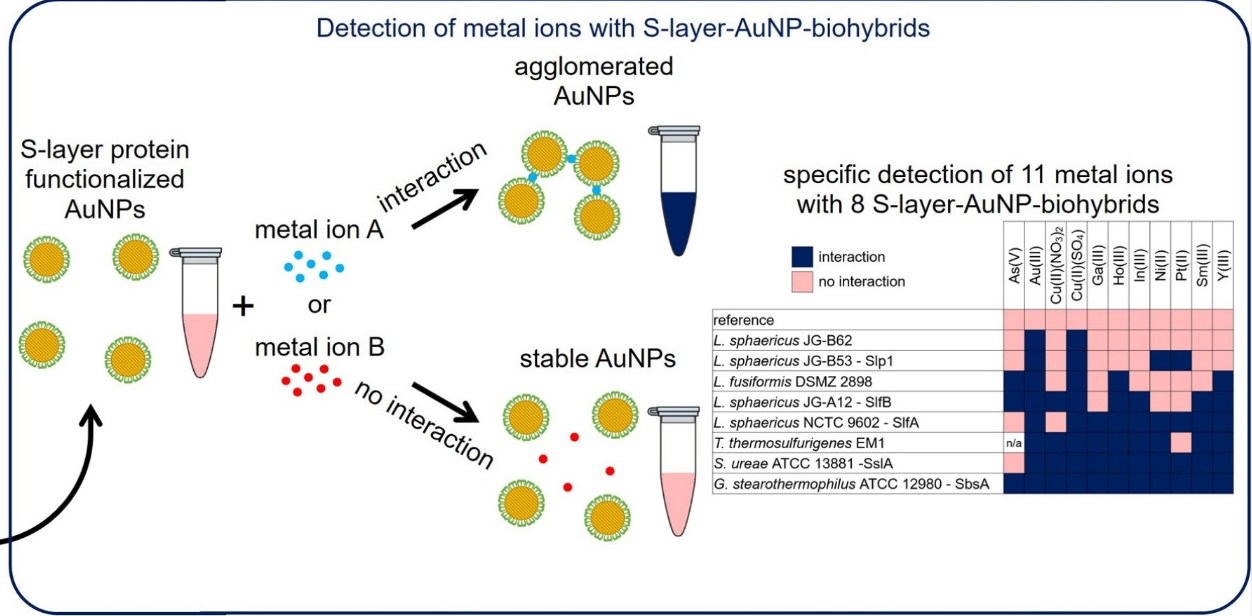Bacterial surface layer proteins (S-layer) possess unique binding properties for metal ions. By combining the binding capability of S-layer proteins with the optical properties of gold nanoparticles (AuNP), namely plasmonic resonance, a colorimetric detection system for metal and metalloid ions in water was developed. Eight S-layer proteins from different bacteria species were used for the functionalization of AuNP. The thus developed biohybrid systems, AuNP functionalized with S-layer proteins, were tested with different metal salt solutions, e.g. Indium(III)-chloride, Yttrium(III)-chloride or Nickel(II)-chloride, to determine their selective and sensitive binding to ionic analytes. All tested S-layer proteins displayed unique binding affinities for the different metal ions. For each S-layer and metal ion combination markedly different reaction patterns and differences in concentration range and absorption spectra were detected by UV/vis spectroscopy. In this way, the selective detection of tested metal ions was achieved by differentiated analysis of a colorimetric screening assay of these biohybrid systems. A highly selective and sensitive detection of yttrium ions down to a concentration of 1.67 × 10−5 mol/l was achieved with S-layer protein SslA functionalized AuNP. The presented biohybrid systems can thus be used as a sensitive and fast sensor system for metal and metalloid ions in aqueous systems.

Bacterial surface layer proteins (S-layer) possess unique binding properties for metal ions. By combining the binding capability of S-layer proteins with the optical properties of gold nanoparticles (AuNP), namely plasmonic resonance, a colorimetric detection system for metal and metalloid ions in water was developed. Eight S-layer proteins from different bacteria species were used for the functionalization of AuNP. The thus developed biohybrid systems, AuNP functionalized with S-layer proteins, were tested with different metal salt solutions, e.g. Indium(III)-chloride, Yttrium(III)-chloride or Nickel(II)-chloride, to determine their selective and sensitive binding to ionic analytes. All tested S-layer proteins displayed unique binding affinities for the different metal ions. For each S-layer and metal ion combination markedly different reaction patterns and differences in concentration range and absorption spectra were detected by UV/vis spectroscopy. In this way, the selective detection of tested metal ions was achieved by differentiated analysis of a colorimetric screening assay of these biohybrid systems. A highly selective and sensitive detection of yttrium ions down to a concentration of 1.67 × 10−5 mol/l was achieved with S-layer protein SslA functionalized AuNP. The presented biohybrid systems can thus be used as a sensitive and fast sensor system for metal and metalloid ions in aqueous systems.
